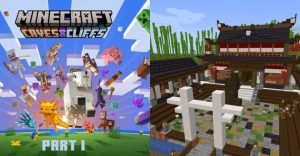Boruto Proves That Sasuke Was Never Naruto’s Worst Character

While Boruto: Naruto Next Generations is the sequel to Naruto, its rehabilitation of Sasuke Uchiha shows that it can look back at past events and characters that are seemingly settled and adjust elements of the original story that the creators believe require tweaking or that fans demand happen.
Despite Naruto being filled with a galaxy of detestable characters, fans reserved a special level of dislike for Sasuke. Sasuke was not always the target of fan hate. In the beginning, Sasuke was positioned to rival Naruto as a character fans could depend upon to do the right thing. Unfortunately, as Sasuke became subsumed by his need to get revenge for his family by any means necessary, fans quickly turned against him. Moreover, as is common when fans are confronted with a character’s complete role reversal, the dislike that developed was deep and broad. However, Boruto has shown that for all the despicable actions Sasuke committed in Naruto, they cannot be compared to the evil being done in the current Naruto universe.
One of Sasuke’s most distasteful actions was his turn against his friends, demolishing any trust and mutual respect that had developed. For fans, nowhere was this more obvious than in the breakdown in his relationship with Naruto. While Naruto remained dedicated to supporting Sasuke, many fans gave up on seeing any good in him. In Boruto, the type of back-stabbing and double-dealing that turned fans against Sasuke, are the rule rather than the exception. The most obvious illustration of this is found in the character Amado. From the start, readers see that Amado has no loyalty to anyone but himself. He joins Kara but is focused on killing its leader. He creates a clone of one of the greatest ninjas to have lived, yet at the most crucial time, he gives it minimal support to accomplish its goal. He then switches sides to support Konoha Village but keeps essential information from them. He then pushes Kawaki to essentially become a super-weapon that will likely cause the destruction of his erstwhile new ally, Konoha Village.

Another sore point for fans was Sasuke’s hatred for his community, whether it was his brother Itachi, or his village. The fact that he at different times wanted to destroy both despite their continuous support of him was unforgivable for many fans. In Boruto, the lack of respect, care, and support for one’s clan is rampant. Take, for example, the Otsutsuki clan members Momosuki and Isshiki. Despite being from the same clan, with the same goal of growing a God Tree and harvesting its chakra fruit, they are as focused on stopping one another, as the forces aligned against them are focused on stopping them. They have no interest in helping one another, and quietly plot against each other. There is no love lost when Isshiki is killed. Instead, Momosuki takes advantage of the situation to attack Sasuke and attempt to attack Naruto. However, his attack is not to get revenge for the loss of a clan member, but rather to achieve his own interests.
There is also the base depravity of Isshiki, Jigen and Kara, who have no issue with buying children in order to experiment on them and turn them into powerful yet deformed cyborgs. In short, while Sasuke was far from the hero in Naruto fans initially thought he would be, Boruto has no shortage of characters in its cast whose actions are much more reprehensible than anything Sasuke did.
About The Author


















